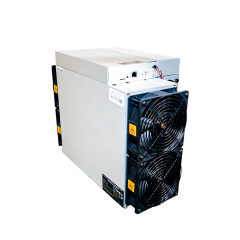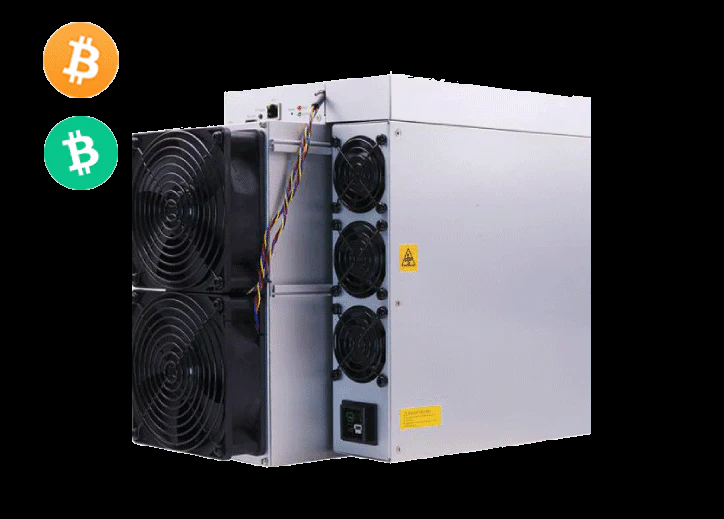Antminer S19j Pro Connection Issues and Solutions: A Practical Guide for Miners
The Antminer S19j Pro stands as a flagship mining rig in the cryptocurrency industry, offering exceptional performance with its 104 TH/s hashrate and 29.5 J/TH energy efficiency. Designed for professional mining operations, it has become a go-to choice for Bitcoin (BTC) and Bitcoin Cash (BCH) miners worldwide. However, like any sophisticated piece of hardware, the S19j Pro is not immune to technical challenges, particularly when it comes to connectivity issues.
In this article, we’ll explore common Antminer S19j Pro connection issues, their root causes, and practical solutions to ensure your mining operations remain uninterrupted. Whether you’re a seasoned mining operator or new to the field, this guide will provide actionable insights to optimize your mining setup.
Understanding the Antminer S19j Pro’s Connectivity Features
Before diving into troubleshooting, it’s essential to understand the Antminer S19j Pro’s connectivity architecture. The miner is equipped with an RJ45 Ethernet port, supporting 10/100M connections, which is standard for most mining setups. It also features a user-friendly web interface for configuration and monitoring, allowing operators to adjust settings and monitor performance remotely.
However, despite its robust design, connectivity issues can arise due to various factors, including network configuration, hardware malfunctions, or environmental conditions. Let’s examine the most common issues and their solutions.
Common Antminer S19j Pro Connection Issues
1. Inability to Connect to the Miner’s Web Interface
One of the most frequent complaints among operators is being unable to access the miner’s web interface. This issue can stem from:
- Incorrect IP Configuration: If the miner’s IP address is not properly assigned or conflicts with other devices on the network, the web interface may become inaccessible.
- Network Firewall Restrictions: Firewalls or security settings on your router might block communication with the miner.
- Faulty Ethernet Cable or Port: Damaged cables or ports can disrupt the connection between the miner and your network.
Solution:
- Verify that the miner’s IP address is correctly configured using tools like Angry IP Scanner or your router’s DHCP client list.
- Disable any firewall settings temporarily to test if they are causing the issue.
- Replace the Ethernet cable and test different ports on your router or switch.
2. Miner Not Detected by Mining Pools
Another common issue is the miner failing to connect to your chosen mining pool. This can occur due to:
- Incorrect Pool Configuration: Errors in the pool URL, username, or password can prevent the miner from establishing a connection.
- Network Latency or Instability: High latency or intermittent network issues can disrupt communication with the pool.
- Outdated Firmware: Running an older firmware version may cause compatibility issues with modern pool protocols.
Solution:

- Double-check the pool configuration in the miner’s web interface, ensuring all details are accurate.
- Test your network connection for stability and consider switching to a wired connection if you’re using Wi-Fi.
- Update the miner’s firmware to the latest version available from Bitmain’s official website.
3. Intermittent Connectivity or Hashrate Drops
Intermittent connectivity or sudden drops in hashrate can significantly impact mining efficiency. Potential causes include:
- Overheating: Excessive heat can cause the miner to throttle performance or disconnect temporarily.
- Power Supply Issues: Inconsistent power delivery can lead to instability.
- Network Congestion: High traffic on your network can result in packet loss or delays.
Solution:
- Ensure the miner’s cooling system is functioning correctly, and the ambient temperature is within the recommended range (5-35°C).
- Verify that your power supply meets the miner’s requirements (200-240V, 47-63Hz) and is free from fluctuations.
- Prioritize mining traffic on your network using Quality of Service (QoS) settings on your router.
4. Ethernet Port Malfunction
A faulty Ethernet port can render the miner completely unreachable. This issue is often caused by:

- Physical Damage: Accidental damage during installation or maintenance.
- Electrical Surges: Power surges can fry the Ethernet port’s circuitry.
Solution:
- Inspect the Ethernet port for physical damage and test it with a different cable or device.
- If the port is damaged, contact Bitmain’s support team or a certified technician for repair or replacement.
Proactive Measures to Prevent Connectivity Issues
While troubleshooting is essential, adopting proactive measures can minimize the likelihood of connection issues in the first place. Here are some best practices:
1. Regular Firmware Updates
Bitmain frequently releases firmware updates to improve performance, fix bugs, and enhance compatibility with mining pools. Regularly updating your miner’s firmware ensures optimal functionality.

2. Stable Network Infrastructure
Invest in a robust network setup with reliable routers, switches, and Ethernet cables. Minimize Wi-Fi usage for critical mining operations to reduce latency and packet loss.
3. Environmental Optimization
Maintain a clean and cool operating environment for your miner. Overheating not only affects performance but can also lead to hardware failures that disrupt connectivity.
4. Redundant Power Supplies
Use uninterruptible power supplies (UPS) or surge protectors to safeguard your miner against power fluctuations and outages.
5. Regular Maintenance
Perform routine inspections of your miner’s hardware, including fans, cables, and ports, to detect and address potential issues early.

Leveraging the Antminer S19j Pro’s Strengths
Despite occasional connectivity challenges, the Antminer S19j Pro remains a top-tier mining rig, offering unparalleled performance and efficiency. Its SHA-256 algorithm versatility allows miners to switch between BTC and BCH mining based on profitability, while its advanced cooling system ensures sustained operation even in demanding environments.
Moreover, Bitmain’s comprehensive maintenance framework and global logistics support make it easier for operators to source spare parts and access technical assistance when needed. By combining these strengths with proactive troubleshooting and maintenance, you can maximize your mining ROI and minimize downtime.
Conclusion
The Antminer S19j Pro is a powerhouse in the cryptocurrency mining industry, but like any advanced hardware, it requires careful setup and maintenance to perform at its best. By understanding common connection issues and implementing the solutions outlined in this guide, you can ensure smooth and efficient mining operations.
Remember, the key to successful mining lies in a combination of robust hardware, optimized infrastructure, and proactive management. With these principles in mind, your Antminer S19j Pro will continue to deliver exceptional results in the competitive world of cryptocurrency mining.
For more tips and expert insights on mining hardware and operations, stay tuned to our blog. Happy mining!